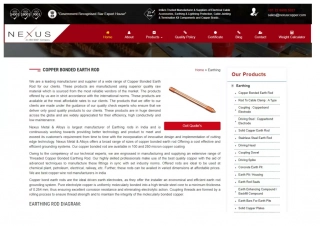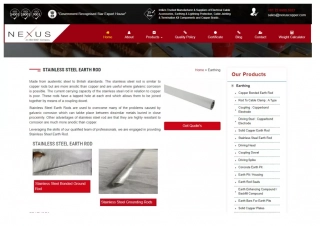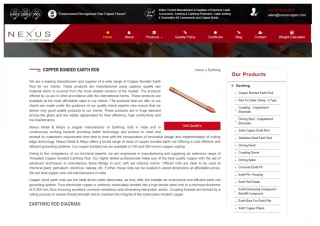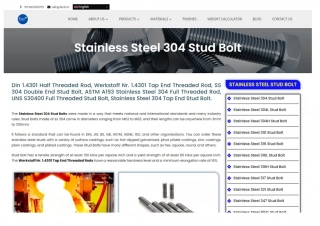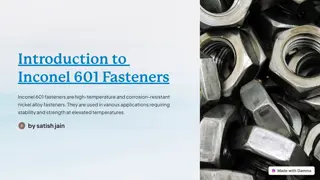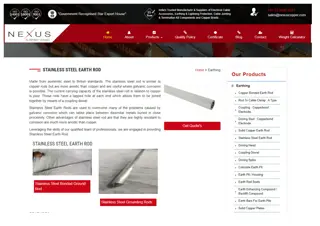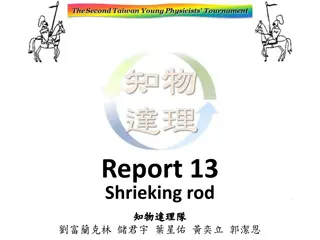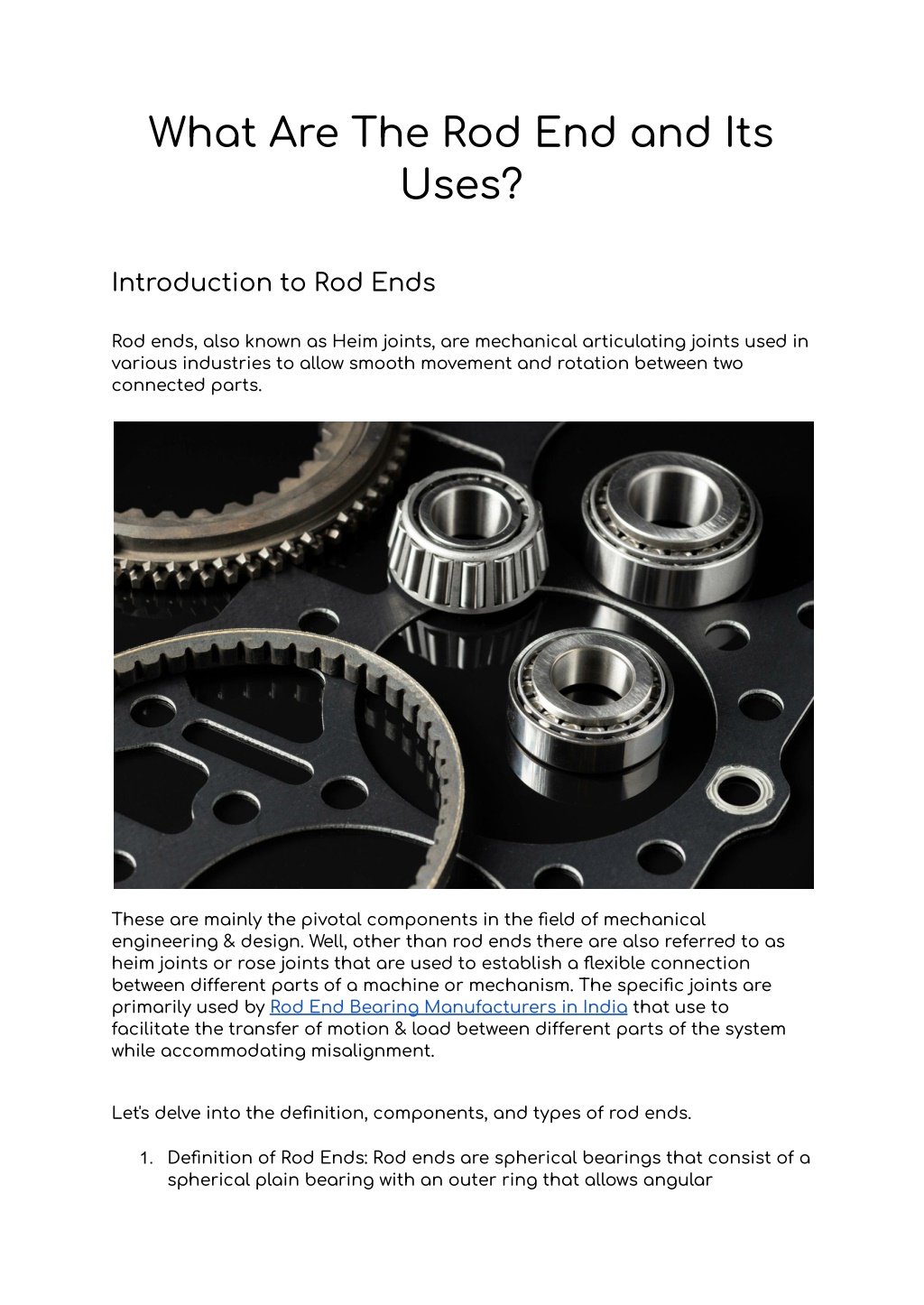
What Are The Rod End and Its Uses
Rod ends, also known as Heim joints, are mechanical articulating joints used in various industries to allow smooth movement and rotation between two connected parts.
Download Presentation

Please find below an Image/Link to download the presentation.
The content on the website is provided AS IS for your information and personal use only. It may not be sold, licensed, or shared on other websites without obtaining consent from the author. If you encounter any issues during the download, it is possible that the publisher has removed the file from their server.
You are allowed to download the files provided on this website for personal or commercial use, subject to the condition that they are used lawfully. All files are the property of their respective owners.
The content on the website is provided AS IS for your information and personal use only. It may not be sold, licensed, or shared on other websites without obtaining consent from the author.
E N D
Presentation Transcript
What Are The Rod End and Its Uses? Introduction to Rod Ends Rod ends, also known as Heim joints, are mechanical articulating joints used in various industries to allow smooth movement and rotation between two connected parts. These are mainly the pivotal components in the field of mechanical engineering & design. Well, other than rod ends there are also referred to as heim joints or rose joints that are used to establish a flexible connection between di?erent parts of a machine or mechanism. The specific joints are primarily used by Rod End Bearing Manufacturers in India that use to facilitate the transfer of motion & load between di?erent parts of the system while accommodating misalignment. Let's delve into the definition, components, and types of rod ends. 1. Definition of Rod Ends: Rod ends are spherical bearings that consist of a spherical plain bearing with an outer ring that allows angular
misalignment and rotation. They are commonly used in mechanical systems to transmit motion between the moving parts. 2. Components of Rod Ends The key components of rod ends include the outer ring, inner ring, ball, and bearing housing. These components work together to provide flexibility and strength in mechanical linkages. 3. Types of Rod Ends: There are di?erent types of rod ends available, such as male rod ends, female rod ends, and weldable rod ends. Each type serves specific purposes in applications based on their design and construction. Mechanics of Rod Ends Understanding the functionality and working principles of rod ends is crucial to appreciating their advantages in mechanical systems. 1. The functionality of Rod Ends: Rod ends are designed to accommodate angular misalignment and axial loads while allowing for smooth rotation and movement. They provide a pivot point between two parts, ensuring flexibility and stability. 2. Working Principles of Rod Ends: The working principle of rod ends involves the ball and socket mechanism, where the ball rotates within the socket to facilitate movement. This design enables e?cient transmission of force and motion in di?erent directions. 3. Advantages of Rod Ends in Mechanical Systems: Rod ends o?er benefits such as high load capacity, corrosion resistance, and ease of installation. They are essential components in various industries due to their reliability and versatility. Applications of Rod Ends The versatility of rod ends makes them indispensable in a wide range of industries, including automotive, aerospace, and industrial machinery. 1. Automotive Industry: In the automotive sector, rod ends are used in steering linkages, suspension systems, and throttle controls to ensure smooth and precise movement of components. 2. Aerospace Industry: Rod ends play a vital role in aircraft control surfaces, landing gear systems, and engine components, where precision and reliability are critical for safe operation. 3. Industrial Machinery: Industrial machinery such as conveyor systems, robotic arms, and agricultural equipment rely on rod ends to facilitate movement and alignment in complex mechanical systems. Benefits of Using Rod Ends
The use of rod ends in mechanical systems o?ers several advantages that contribute to improved performance and longevity. 1. Improved Flexibility in Mechanical Systems: Rod ends provide flexibility in adjusting angles and positions, allowing for dynamic movement and adaptation in changing conditions. 2. Enhanced Durability and Longevity: With their robust construction and high-quality materials, rod ends o?er superior durability and resistance to wear and tear, ensuring prolonged service life. 3. Ease of Maintenance and Replacement: Rod ends are designed for easy maintenance and replacement, reducing downtime and maintenance costs in industrial applications. Maintenance and Care of Rod Ends Proper maintenance is essential to ensure the optimal performance and longevity of rod ends in mechanical systems. 1. Proper Lubrication Techniques: Regular lubrication is necessary to reduce friction and prevent premature wear of rod ends. Using the right lubricant and following proper lubrication techniques are crucial for optimal performance. 2. Inspection and Monitoring for Wear and Tear: Routine inspection of rod ends for signs of wear, corrosion, or damage is important to identify potential issues early and prevent failures in mechanical systems. 3. Replacement and Upgrading Considerations: When rod ends show signs of wear or damage, timely replacement is necessary to maintain the functionality and safety of the equipment. Upgrading to high-performance rod ends can enhance the e?ciency and reliability of mechanical systems. Conclusion In conclusion, rod ends are versatile components that play a crucial role in various industries in India and globally. Understanding the mechanics, applications, and benefits of rod ends is essential for maximizing their performance and ensuring the smooth operation of mechanical systems. Let's continue to explore the world of rod ends and discover the endless possibilities they o?er in enhancing mechanical systems in India and beyond. Also Read: Understanding the Manufacturing Process of aluminum casting parts


